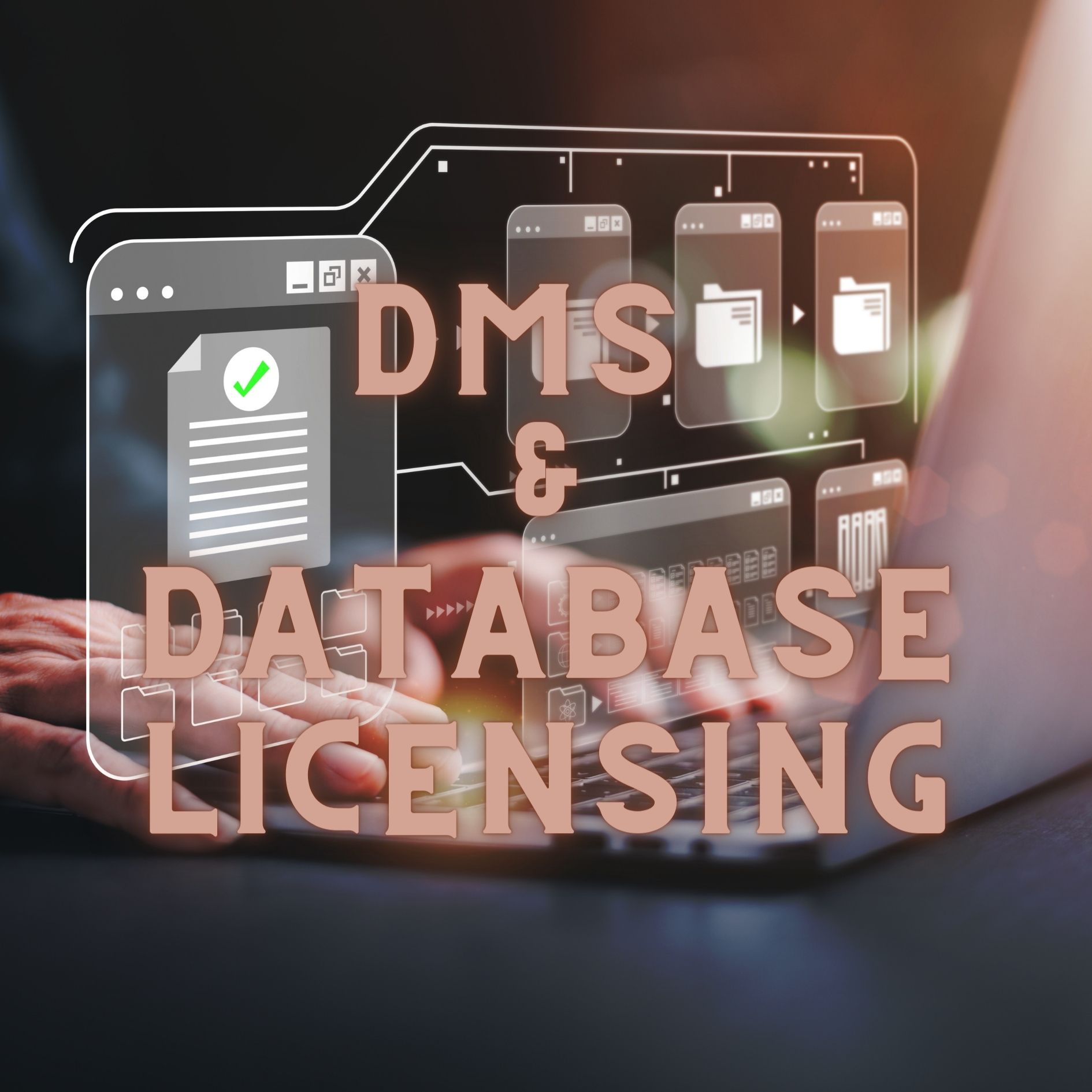Introduction:
In the fast-paced realm of information technology, the effective management of databases is crucial for organisational success. As businesses increasingly rely on sophisticated database systems to handle their data, the complexities of database licensing have become more pronounced. This detailed blog post aims to delve into the intricacies of database licensing. It aims to delve into the challenges faced by organizations, offering a comprehensive understanding of these issues. Additionally, the post provides thorough solutions and suggestions to pave the way for a more transparent and user-friendly licensing landscape.
Understanding:
A profound understanding of database licensing lies at the core of efficient database management. This process involves delving into the legal and financial agreements that govern the use of database software, encompassing considerations such as licensing models, compliance, and budgetary implications. However, recognising the impact of licensing decisions on organisational strategy and resource allocation is crucial for making informed choices in an ever-evolving technological landscape.
The essence of comprehending database licensing lies in acknowledging the challenges organisations face. Moreover, the journey involves navigating a maze of intricacies, from deciphering complex pricing structures to mitigating compliance risks. Understanding these challenges becomes the foundation upon which we can explore viable solutions for a more streamlined and efficient database licensing landscape.
Problems Faced by the Customer:
1. Complex Licensing Models:
Firstly, one of the significant challenges organisations encounters is the complexity of database licensing models. Vendors often employ diverse metrics, such as user counts, processor usage, or data volume, making it arduous for businesses to decipher the most cost-effective and suitable licensing options. The result is confusion and a potential mismatch between the organisation’s needs and the chosen licensing model.
This complexity can lead to inadvertent overpayment or underutilisation of resources, impacting the organisation’s efficiency and bottom line.
2. High Costs and Budgeting Challenges:
Secondly, the financial implications of database licensing can be substantial. Upfront fees, ongoing maintenance costs, and additional charges for support and updates contribute to budgetary challenges. Organizations struggle with earmarking substantial resources for licensing fees, which could potentially restrict investments in other vital areas.
This financial burden often leads to budgeting challenges, hindering the organisation’s ability to allocate resources effectively. The high costs associated with licensing can impact competitiveness and innovation, forcing organisations to make difficult choices regarding technology investments.
3. Compliance Risks:
Thirdly, navigating the terms and conditions of database licensing agreements is a continuous challenge. The dynamic nature of business environments, with fluctuating user numbers, data volumes, and application architectures, increases the risk of unintentional non-compliance. Organizations confront the challenging responsibility of keeping up with intricate licensing agreements to steer clear of legal repercussions and financial penalties.
Non-compliance carries substantial risks for organizations, including possible legal consequences and financial penalties. The evolving nature of compliance requirements makes it challenging for organisations to ensure adherence to licensing terms, leading to a constant struggle to avoid legal pitfalls.
4. Vendor Lock-In:
Forthly, vendor lock-in poses a significant hurdle for organisations aiming for flexibility and innovation. Some licensing agreements are structured to create dependencies, making switching to alternative database solutions challenging. This process limits an organisation’s ability to adapt to changing technological landscapes and explore more cost-effective or feature-rich options from different providers.
The fear of vendor lock-in restricts organisations from exploring new technologies and adopting solutions that might better suit their evolving needs. This limitation stifles innovation and hampers the organisation’s competitiveness in the ever-changing business landscape.
5. Lack of Standardisation:
Finally, the absence of standardised licensing models across the database industry contributes to confusion and inefficiency. Varying rules, terms, and pricing structures hinder organisations from making informed decisions. Standardisation could simplify decision-making, fostering a more transparent and competitive marketplace.
The lack of standardization adds complexity to the evaluation process for organizations investing in database solutions. It makes comparing offerings from different vendors challenging, leading to suboptimal decision-making and potentially hindering the adoption of more efficient and cost-effective solutions.
Solutions:
1. Simplified and Transparent Licensing Models:
Vendors should strive to simplify licensing models using transparent and standardised metrics. This approach would make it easier for organisations to compare offerings and choose the most cost-effective option for their needs.
A move towards simplified and transparent licensing models empowers organisations to make informed decisions, reducing the likelihood of misunderstandings and overpayments. It also fosters trust between vendors and customers, laying the foundation for long-term partnerships.
2. Flexible and Scalable Pricing:
Implementing flexible and scalable pricing structures, such as pay-as-you-go models, can accommodate the diverse needs of organisations. This process allows for scalability, enabling organisations to adjust their usage based on requirements and maintain predictable costs.
Adopting flexible and scalable pricing empowers organizations to adjust to changing circumstances. It ensures that organisations only pay for the resources they use, promoting cost-effectiveness and allowing for more efficient resource allocation.
3. Educational Resources and Support:
Vendors should invest in comprehensive educational resources and support to assist organisations in understanding and complying with licensing agreements. This technology comprises documentation, webinars, and responsive customer support services.
Robust educational resources empower organisations to navigate licensing agreements with confidence. Accessible support channels ensure organisations can seek assistance when needed, fostering a collaborative and supportive vendor-customer relationship.
4. Mitigation of Vendor Lock-In:
Database vendors can address vendor lock-in concerns by adopting open standards and interoperability. This approach facilitates smoother transitions between database solutions and gives customers more flexibility and control.
Mitigating vendor lock-in encourages healthy competition and innovation. It allows organisations to choose solutions based on merit rather than constrained by proprietary dependencies, promoting a dynamic and diverse technological landscape.
5. Industry Collaboration for Standardization:
Encouraging collaboration among vendors and industry organisations to establish common standards for licensing models can simplify decision-making. Standardised metrics, terms, and conditions create a more transparent and competitive marketplace.
It streamlines the evaluation process, enhances market transparency, and fosters an environment where organisations can make decisions based on the merits of the solutions rather than navigating complex and varied licensing terms.
Conclusion:
In conclusion, the landscape of database licensing is intricate but not insurmountable. Moreover, the identified problems, ranging from complex licensing models to the lack of standardisation, necessitate a strategic and collaborative approach. On the other hand, by implementing the suggested solutions, vendors and organisations can contribute to a more transparent and adaptable licensing environment.
Suggestions:
1. Regularly Review and Update Licensing Agreements: Firstly, periodic reviews ensure that licensing agreements remain relevant, incorporating changes in technology and business needs.
2. Implement Clear Communication Channels: Secondly, establishing open communication channels between vendors and customers fosters transparency and addresses concerns promptly.
3. Offer Tailored Licensing Solutions: Thirdly, customised licensing options allow organisations to tailor agreements to match their unique requirements and budgets.
4. Provide Licensing Flexibility: Fourthly, introducing flexibility in licensing models accommodates the dynamic nature of businesses and promotes scalability.
5. Invest in User Education and Training: Educating users on licensing intricacies ensures better compliance and optimised usage of database solutions.
6. Explore Open Source Alternatives: Evaluating open-source database solutions offers flexibility and reduces the risk of vendor lock-in.
7. Negotiate Customised Agreements: Engaging in collaborative negotiations allows for creating customised agreements that suit both parties.
8. Stay Informed About Industry Trends: Keeping abreast of industry trends allows organisations to make strategic decisions and anticipate changes in the licensing landscape.
9. Utilise Third-Party Consulting Services: Engaging third-party consulting services provides expert insights and recommendations for optimising licensing costs.
10. Advocate for Standardisation: Finally, encouraging industry collaboration for standardisation contributes to a more transparent and competitive marketplace. It streamlines decision-making and fosters an environment where organisations can confidently navigate licensing agreements.
Visit our website to know more!
Follow us on LinkedIn:


